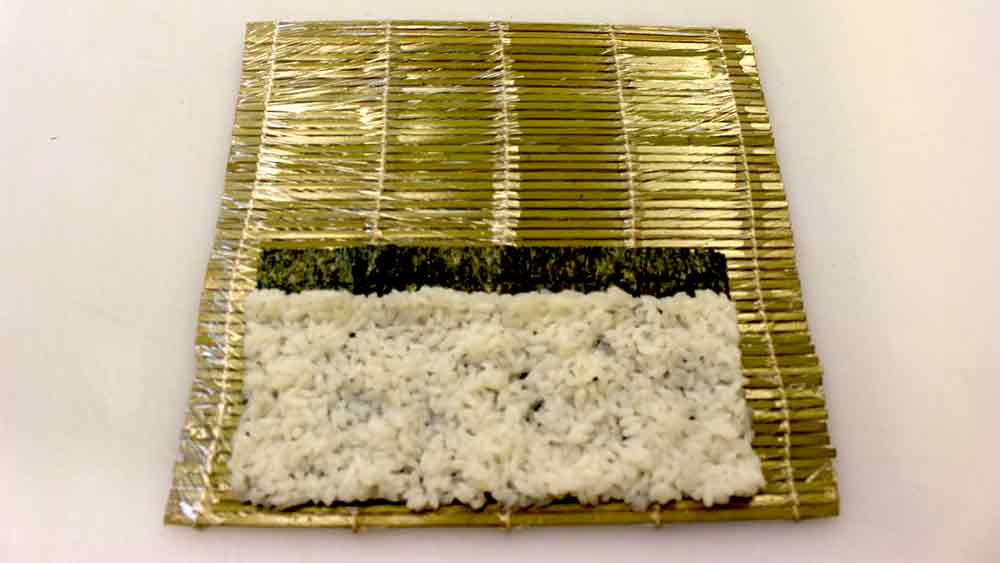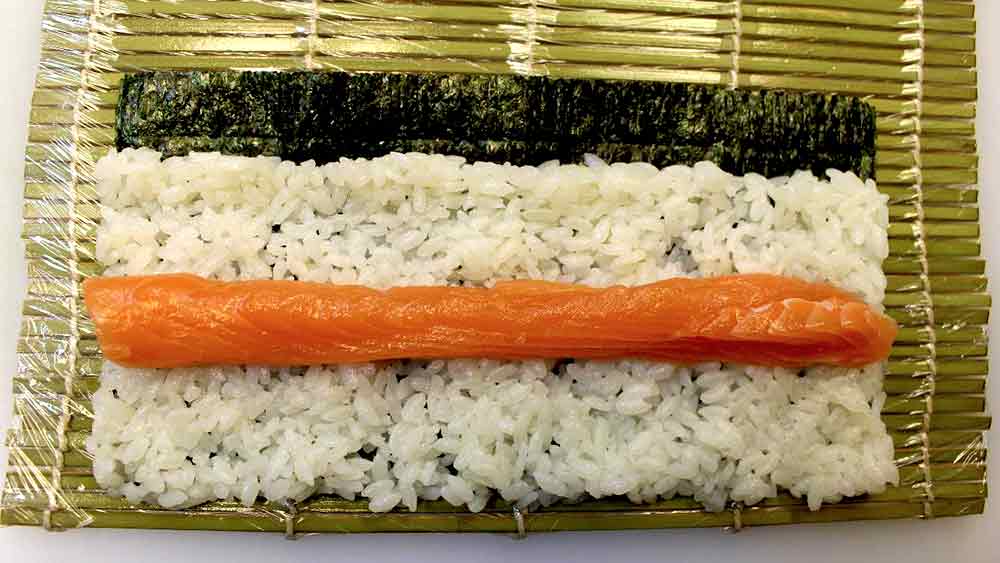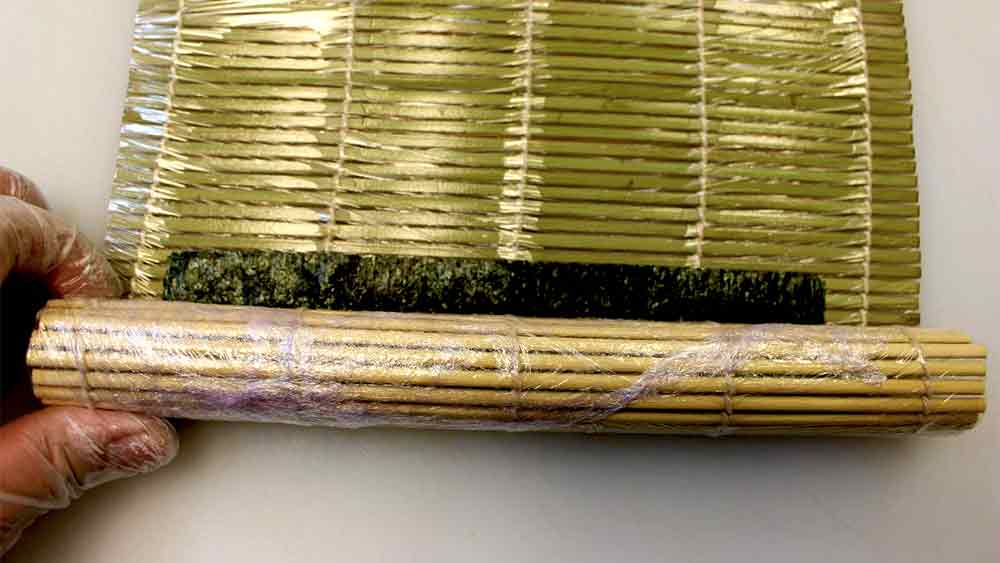Sushi is a well know traditional Japanese food with many hundreds of years history. As is often the case with fish it is the simplest preparation that delivers some of the best flavours and textures. Its not just the fish did you also know that the Japanese judge the quality of sushi by the flavour, texture and stickiness of the rice? (Take a look at our guide to making sushi rice below). Whilst there are many different skills to be learnt and years of training to become a professional sushi chef there are many versions such as Salmon Hosomaki that can be made at home.
Our recipe here is for one the the best known and popular types – Hosomaki/Maki (or as it is often refered to “sushi rolls”) with a salmon filling.
Hosomaki are made as long thin rolls with nori (seaweed) on the outside and a single filling. They are a great option to get started with. Once you feel more confident and you are pleased with your technique, you can move on to more adventurous sushi such as uramaki – inside out rolls or temaki – handrolls.
Our guide for this Salmon Roll – Salmon Hosomaki recipe is no less than the head chef from Kimura whose kitchen creates some of the finest fresh sushi in our neighbourhood, so we are in very good hands.
Ingredients For Salmon Hosomaki (Salmon Roll Sushi)
Salmon from Walter Purkis & Sons
Sheets of Nori (roasted seaweed)
Short-grain Japanese Sushi Rice
Sushi Vinegar
Before you start:
Bamboo sushi mat
Cling film
A sharp knife
Nice to have:
Wasabi
Soy sauce
Pickled ginger
- Before you start cover your bamboo mat with some cling film. this will make it much easier to form your roll and keep your mat clean.
- Place the nori sheet on the sushi mat with the edge along theside closest to you.
- The shiny side of nori should be facing downwards.
- Cover the nori with a thin layer of rice approximatly 5mm thick. It is important to make sure that that it is evenly spread otherwise you finished roll will look rather wobbly.
- You can see in the photo here that the rice does not cover the whole nori sheet – leave a 1.5cm gap at the top. No need to get your ruler out to measure, approximately works fine!


- Cut your salmon into a thin piece and place along the centre of the rice.
- Keeping a even thickness will give a better presentation in the finished rolls.
- Starting with the side closest to you, roll the ingredients towards the top, using the mat to form a good even shape.
- Once you have the shape rotate the roll once this will seal the overlapping edge of nori.
- Using a sharp knife cut the roll in half first, then the two smaller rolls into thirds.
- Serve your salmon hosomaki with soy sauce, wasabi, and pickled ginger.

Making Authentic Sushi Rice
The word “sushi” means “it’s sour” This is based on it’s historical origins where it was a fermented fish dish. The sourness that “sushi” refers particularly is the vinegar in the rice. Whilst the dish has changed over many hundreds of years, all Sushi still has a base of specially prepared rice that is then complimented with other tasty ingredients.
First you need to wash your rice. Using plenty of water stir and mix the rice with your hand in a large bowl, you will see the water become cloudy with starch. Repeat the washing several times until the water becomes clear. Then let the rice soak the rice for 30 minutes.
Now you can start cooking Add 300g rice and 400ml water to your saucepan and put on the stove at maximum heat until the water boils. Then reduce the heat and allow the rice simmer for about 15-20 minutes with the lid on.
When the simmer time has elapsed remove from the heat but leave the rice in the pan to steam for a further 10-15 minutes this will give the right ammount of stickiness which will help forming your sushi shapes.
To make authentic sushi rice you now need to be mix in sushi vinegar, Mix 80ml of sushi vinegar with the rice. To get the best flavour, the vinegar needs to be folded into the rice while it is still warm. The mixing process allows moisture to evaporate and helps it cool before use.








